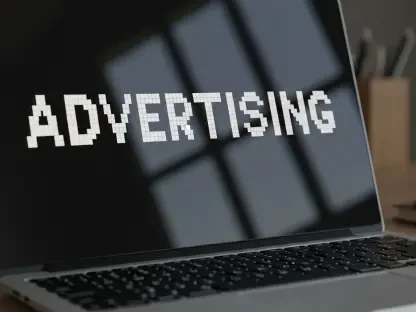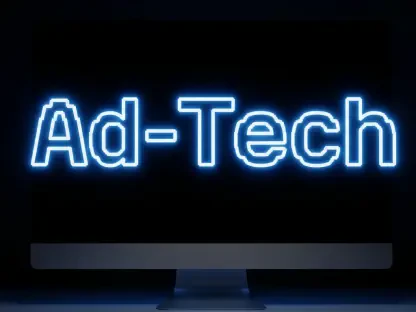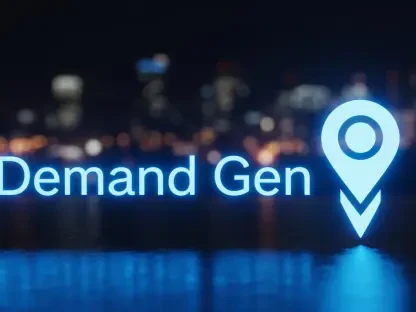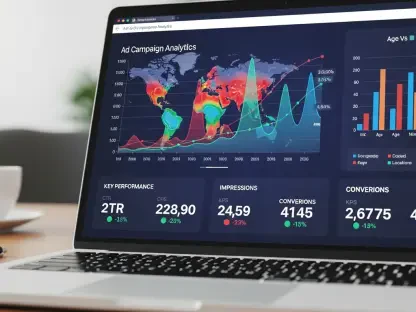Dive into the world of digital marketing with Anastasia Braitsik, a global leader in SEO, content marketing, and data analytics. With years of experience crafting strategies that drive results, Anastasia has a unique perspective on the art and science of pay-per-click (PPC) advertising. In this interview, we explore the nuances of creating monthly PPC reports that not only inform but truly delight clients. From the importance of clear communication to the balance of data and insight, and the role of context in making numbers meaningful, Anastasia shares actionable advice and real-world examples to elevate your reporting game.
How do you see PPC reporting playing a role in building strong client relationships?
PPC reporting is often the primary way we communicate with clients, and it’s a make-or-break factor in how they perceive our value. It’s not just about showing numbers; it’s about telling a story that reassures them we’re on top of their campaigns. A well-crafted report can build trust, demonstrate expertise, and show that we’re aligned with their goals. I’ve seen firsthand how a thoughtful report can turn a skeptical client into a long-term partner, simply because it makes them feel understood and prioritized.
What’s a common mistake agencies make when it comes to reporting, even if their campaign results are solid?
One big mistake is assuming clients care about every detail we find fascinating. Agencies often overload reports with technical jargon or irrelevant data, thinking it shows off their hard work. But clients don’t want a data dump; they want clarity. I’ve noticed that when reports aren’t tailored to what the client actually needs to know, they disengage. Even if the results are great, they might feel neglected or confused, and that’s a fast track to losing their trust.
Can you break down the difference between a traditional PPC report and a dashboard, and how you choose between them?
Sure, a traditional PPC report is usually a static document, like a PDF or slideshow, delivered monthly with detailed commentary. It’s curated to highlight specific insights and recommendations. A dashboard, on the other hand, is typically an online tool showing real-time data with less explanation—think something like Looker Studio. I decide which to use based on the client’s preference and needs. A busy executive might prefer a concise report with a summary page, while a hands-on marketing manager might want a dashboard to dig into live metrics. It’s all about matching the format to their style.
Why is keeping reports simple so important, and how do you achieve that without losing critical information?
Simplicity is key because clients are often short on time and don’t have the patience for overly complex reports. If they can’t grasp the main points in a few minutes, they’ll tune out. I achieve simplicity by focusing on their key performance indicators—KPIs—and stripping away anything that doesn’t directly support those metrics. For example, I always start with a summary page that gives the big picture at a glance. I also organize data logically, grouping by concepts like campaigns or platforms, so it’s easy to follow without feeling like a puzzle.
How do you turn raw data into meaningful insights that clients can act on?
Turning data into insights is about connecting the dots. I start by presenting the data clearly, then I summarize what happened—like a spike in conversions. Next, I explain why it might have happened, maybe due to a new ad creative or a seasonal trend. Finally, I offer a specific action, such as increasing budget for that creative. This process transforms numbers into a roadmap. I’ve had clients tell me that this approach helps them see the ‘why’ behind the ‘what,’ which makes them feel confident in the next steps we propose.
Why does adding context to a report matter so much, and how do you make it easy for clients to understand?
Context is everything because without it, data is just noise. Showing how results compare to last month, last year, or even industry benchmarks helps clients see the bigger picture. For instance, a 10% increase in conversions might sound good, but if I show it’s double the industry average, it suddenly feels like a win. I make it digestible by using simple visuals, like graphs with month-over-month changes or side-by-side comparisons. I’ve found that these comparisons often spark deeper conversations with clients about strategy.
What’s your forecast for the future of PPC reporting, especially with tools and technology evolving so rapidly?
I think PPC reporting is headed toward even more automation and personalization. With tools like AI and platforms like Looker Studio becoming more sophisticated, we’ll see reports that adapt in real-time to a client’s specific KPIs or even their preferred visual style. However, I believe the human element—interpreting data and crafting tailored recommendations—will remain crucial. Technology can handle the heavy lifting of data processing, but building trust through insightful storytelling will always require a personal touch. I’m excited to see how we balance these advancements with the need for genuine connection.









